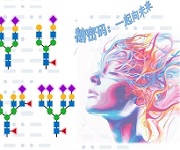Glycobiology Special Issue
SHEN Chang, YIN Qiu-Yuan, MENG Ming-Yao, SUN Jian-Wei
Lysosomal storage diseases (LSD) are a category of genetic metabolic disorders, originating from genetic mutations in lysosomal acid hydrolases, leading to enzymatic deficiencies. Consequently, this triggers an abnormal accumulation of biological macromolecules within lysosomes, subsequently causes significant damage to cellular, tissue, and organ functions. Mutations or deficiencies in β-galactocerebrosidase (GALC) result in the accumulation of psychosine, causing progressive demyelination and triggering Krabbe Disease, a form of neurodegenerative lysosomal storage disease. The specific mechanisms involved in disease regulation are not yet fully elucidated. Increasing reports of pathogenic mutations in the GALC gene, coupled with analyses of GALC protein structure, have gradually enhanced the understanding of how GALC mutations contribute to Krabbe Disease. This knowledge offers robust evidence for the development of potential therapeutic drugs. Furthermore, GALC plays a dual role in various tumor processes, acting as a tumor suppressor in some cancers while acting as a carcinogen in others. However, a comprehensive analysis of GALC’s impact on cancer requires further in-depth research, offering insight into GALC as a potential target for tumor promotion or suppression. GALC is also associated with various neurodegenerative diseases, including Alzheimer’s disease, Parkinson’s disease, and multiple sclerosis. Due to the complexity of GALC’s mechanisms, current treatments for Krabbe Disease caused by GALC deficiency primarily involve single-modality and multi-modality therapies. Nevertheless, developing truly effective treatments necessitates deeper research into the pathogenic mechanisms arising from GALC gene defects. This review summarizes the structural and functional characteristics of GALC, and discusses its roles in the development of the nervous system and tumorigenesis, as well as the latest advances in related research. The aim is to lay the theoretical foundation and provide references for exploring GALC’s regulatory mechanisms and developing innovative drugs for treating associated diseases in the future.
